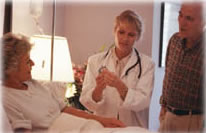 Leg Stress Fracture, Tibia Leg Stress Fracture, Tibia |
 Liver Injury Liver Injury |
 Neck Dislocation Neck Dislocation |
 Neck Fracture Neck Fracture |
 Neck Sprain Neck Sprain |
 Neck Strain Neck Strain |
 Nose Injury Nose Injury |
 Pelvis Strain, Hip-Trunk Pelvis Strain, Hip-Trunk |
 Pelvis Strain, Ischium Pelvis Strain, Ischium |
 Perineum Contusion Perineum Contusion |
 Rib Dislocation Rib Dislocation |
 Rib Fracture Rib Fracture |
 Rib Sprain Rib Sprain |
 Rib Strain Rib Strain |
 Shoulder-Blade (Scapula) Bursitis Shoulder-Blade (Scapula) Bursitis |
 Shoulder-Blade (Scapula) Contusion Shoulder-Blade (Scapula) Contusion |
 Shoulder-Blade Fracture, Acromion Shoulder-Blade Fracture, Acromion |
 Shoulder-Blade (Scapula) Fracture, Coracoid Process Shoulder-Blade (Scapula) Fracture, Coracoid Process |
 Shoulder-Blade (Scapula) Fracture, Glenoid Fossa Shoulder-Blade (Scapula) Fracture, Glenoid Fossa |
 Shoulder-Blade (Scapula) Fracture, Neck Shoulder-Blade (Scapula) Fracture, Neck |
 Shoulder-Blade (Scapula) Strain Shoulder-Blade (Scapula) Strain |
 Shoulder Bursitis, Gleno-Humeral Shoulder Bursitis, Gleno-Humeral |
 Shoulder Bursitis, Subacromial Shoulder Bursitis, Subacromial |
 Shoulder Contusion Shoulder Contusion |
 Shoulder Dislocation Shoulder Dislocation |
 Shoulder Sprain, Acromio-Clavicular Shoulder Sprain, Acromio-Clavicular |
 Shoulder Sprain, Gleno-Humeral Shoulder Sprain, Gleno-Humeral |
 Shoulder Strain Shoulder Strain |
 Shoulder Tendinitis & Tenosynovitis Shoulder Tendinitis & Tenosynovitis |
 Skin Abrasion Skin Abrasion |
 Skin Laceration Skin Laceration |
 Skin Puncture Wound Skin Puncture Wound |
 Spine Fracture, Lower Thoracic & Lumber Region Spine Fracture, Lower Thoracic & Lumber Region |
 Spine Fracture, Sacrum Spine Fracture, Sacrum |
 Spine Fracture, Tailbone Spine Fracture, Tailbone |
 Spine Stress-Fracture, Neck or Back Spine Stress-Fracture, Neck or Back |
 Spleen Rupture Spleen Rupture |
 Thigh-Bone Fracture Thigh-Bone Fracture |
 Thigh Contusion Thigh Contusion |
 Thigh Hematoma Thigh Hematoma |
 Thigh Injury, Hamstring Thigh Injury, Hamstring |
 Thigh Strain, Quadriceps Thigh Strain, Quadriceps |
 Thigh Strain Thigh Strain |
 Thumb Fracture Thumb Fracture |
 Thumb Sprain Thumb Sprain |
 Toe Dislocation Toe Dislocation |
 Toe Exostosis Toe Exostosis |
 Toe Fracture Toe Fracture |
 Tooth Injury & loss Tooth Injury & loss |
 Wrist Contusion Wrist Contusion |
 Wrist Dislocation, Lunate Wrist Dislocation, Lunate |
 Wrist Dislocation, Radius or Ulna Wrist Dislocation, Radius or Ulna |
 Wrist Ganglion Wrist Ganglion |
 Wrist Sprain Wrist Sprain |
 Wrist Strain Wrist Strain |
 Wrist Tenosynovitis Wrist Tenosynovitis |
|
|
Thigh Strain, Quadriceps
Injury to the quadriceps femoris muscle or its tendons. The quadriceps femoris is a large muscle at the front of the thigh. The muscle, tendon and attached bone comprise a unit. The unit stabilizes the thigh and allows its motion. A strain occurs at the weakest part of a unit. Strains are of 3 types:
- Mild (Grade I) - Slightly pulled muscle without tearing of muscle or tendon fibers. There is no loss of strength.
- Moderate (Grade II) - Tearing of fibers in the muscle, tendon or at the attachment to bone. Strength is diminished.
- Severe (Grade III) - Rupture of the muscle-tendon-bone attachment with separation of fibers. Severe strain requires surgical repair. Chronic strains are caused by overuse. Acute strains are caused by direct injury or overstress.
Body Parts Involved
-
Quadriceps femoris muscle or its various tendons.
- Femur (thigh bone), patella (kneecap) or tibia (large lower-leg bone).
- Soft tissue surrounding the strain, including nerves, periosteum (covering to bone), blood vessels and lymph vessels.
Causes
-
Prolonged overuse of muscle-tendon units in the thigh or knee.
- Single violent blow or force applied to the knee or the quadriceps area of the thigh.
Signs & Symptoms
- Pain when moving, stretching or flexing the thigh.
- Muscle spasm of the quadriceps femoris.
- Swelling around the injury.
- Loss of strength (moderate or severe strain).
- Crepitation ("crackling") feeling and sound when the injured area is pressed with fingers.
- Calcification of the muscle or tendon (visible with X-rays).
- Inflammation of the tendon sheath.
Treatment
Note:- Follow your doctor's instructions. These instructions are supplemental.
First Aid
Use instructions for R.I.C.E., the first letters of rest, ice, compression and elevation.
Continuing Care
- Use ice massage 3 or 4 times a day for 15 minutes at a time. Fill a large Styrofoam cup with water and freeze. Tear a small amount of foam from the top so ice protrudes. Massage firmly over the injured area in a circle about the size of a softball.
- After the first 24 hours, apply heat instead of ice, if it feels better. Use heat lamps, hot soaks, hot showers, heating pads, or heat liniments and ointments.
- Take whirlpool treatments, if available.
- Wrap the injured quadriceps muscle loosely with an elasticized bandage between treatments.
- Massage gently and often to provide comfort and decrease swelling.
Medication
-
For minor discomfort, you may use:
Aspirin, acetaminophen or ibuprofen.
Topical liniments and ointments.
- Your doctor may prescribe:
Stronger pain relievers.
Injection of a long-acting local anesthetic to reduce pain.
Injections of corticosteroids, such as triamcinolone, to reduce inflammation.
Home Diet
Eat a well-balanced diet that includes extra protein, such as meat, fish, poultry, cheese, milk and eggs. Increase fiber and fluid intake to prevent constipation that may result from decreased activity.
Diagnostic Measures
- Your
our own observation of symptoms.
- Medical history and exam by a doctor.
- X-rays of the hip, thigh arid knee to rule out fractures.
Prevention Tips
- Participate in a strengthening and conditioning program appropriate for your sport.
- Warm up before practice or competition.
- Wear proper protective equipment, such as thigh pads, for contact sports.
|
|





